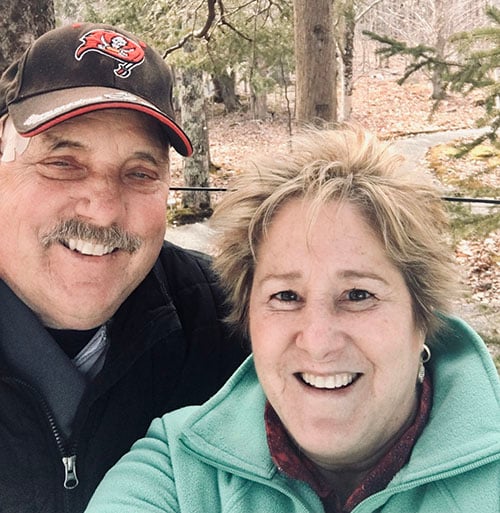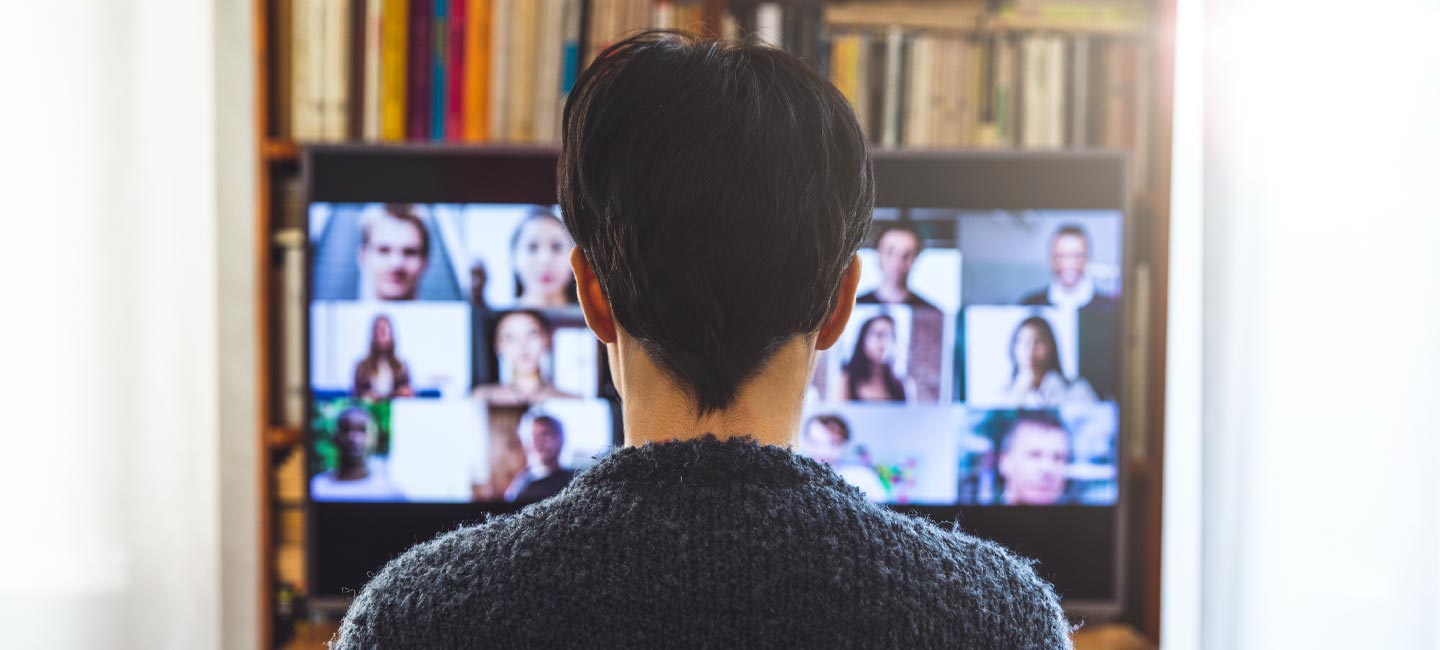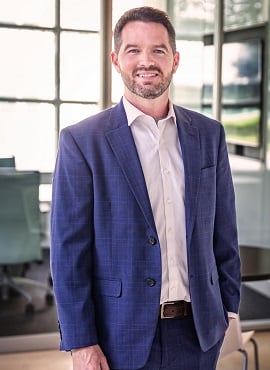Virtual Support Groups Find Success Amid Pandemic
When the COVID-19 pandemic began, Moffitt Cancer Center moved quickly to adapt to new safety and social distancing guidelines. Doctor visits were conducted on iPads. Additional hand sanitizer stations were set up. Chairs in waiting rooms were spread out and marked off. Masks were handed out and temperatures taken for every patient and family member entering the building.
But what about support groups?
While Moffitt may be known for its medical care and research, it’s important not to forget about the emotional and spiritual care that comes with it. So how would it work? Putting a dozen people together in the same room was no longer an option.
According to Chris Healy, a licensed social worker at Moffitt, the first attempts to offer support over the phone worked somewhat well, though they left something to be desired.
“We started with phone support but that wasn’t very successful,” said Healy. “People really wanted to see each other and connect visually.”
The next step was to try video support groups. The technology was in place as Moffitt had adapted to Zoom software to help its team members communicate.
“We’ve been talking about using video formats for meetings for years,” said Healy. “When COVID happened I thought, ‘We have this, maybe it’s a good time to offer it.’ The first time we did it, it took off.”
Virtual interaction combats isolation and depression
Hugh Hedley was diagnosed with stage 4 Hodgkin’s Lymphoma in 2018. In 2019, he received a bone marrow stem cell transplant. At the height of his treatments he was driving from his home in Naples to Moffitt five times per month. Adding more trips to attend support group meetings simply wasn’t an option.
“I started feeling lonely and depressed,” said Hedley. “I was looking for something more than one-on-one and I was lucky enough to find that Moffitt had started the online format.”
Hedley immediately found success in the cancer patient support group. Being able to connect with other patients turned out to be a blessing.

Hugh Hedley, Moffitt patient
“The same isolation. The same depression. The worries I had were the same for them,” he said. “It’s been a real anchor to find other people I could speak to that were going through similar situations with their own cancers.”
This was a first for Hedley. Prior to Moffitt he had never been part of a virtual support group. Some questions naturally came to mind for him like many new members.
How does it work?
Do I have to talk on camera if I’m not feeling well?
Will I experience the same connection as an in-person group?
According to Healy, being on camera or keeping your microphone on is not a requirement for participants. It’s also quite normal for a patient to connect from their beds if they’re not feeling well.
For Hedley, any questions about emotionally connecting were answered in his first session. “It wasn’t overwhelming at all. It makes you feel like you’re right there,” he said. “There’s no barriers for anyone using a phone or computer. There’s a dozen-plus people and I can see the emotion on their faces. People can feel secure leaving the meeting knowing they had someone listening and their voice was heard.”
Support groups are not just for patients
Dawn Zeugin cares for her husband Craig who was diagnosed with glioblastoma in 2019. He’s gone through surgery, radiation, chemotherapy pills and even clinical trials. Despite all the treatment, recent MRIs have shown the disease has progressed. When a procedure had some adverse effects on his mood, Dawn knew she needed to reach out for help.

Craig and Dawn Zeugin
“It’s been a fairly rough course,” she said. “I was very tearful. I didn’t know how to handle it.”
Dawn found Moffitt’s neuro oncology caregiver support group. She attended meetings over the phone at first, not knowing what to expect when she made the switch to video meetings.
“One person was much younger than I imagined,” she said. “Her dog kept jumping on the bed, so it added a little humor and lightheartedness to it.”
Aside from comic relief, the caregiver support groups act as a valuable outlet to those who often ignore their own needs.
“I’ve been fighting hard to do the best I can for him,” said Dawn. “The groups are essential. The convenience that you don’t have to make plans for someone to watch who you’re caring for. The resource is just for you. Nobody’s going to judge you. You feel free to talk about your concerns because you know they’ve been there.”
The future of virtual support at Moffitt
Moffitt offers a variety of support groups on a weekly, monthly or quarterly basis. Many have moved to a completely virtual format. The success has been undeniable as the ability to remove travel has more than doubled attendance in many groups.
“We were really having trouble getting the word out,” said Healy. “Then I saw the numbers just blow up. That was the ‘a-ha’ moment.”
So, what will happen when the pandemic ends and it’s safe to bring groups back? Right now, there are no plans to remove the video option, even if meetings are being held in-person.
“We’ll never go back,” said Healy. “It’s benefitted too many people.”



